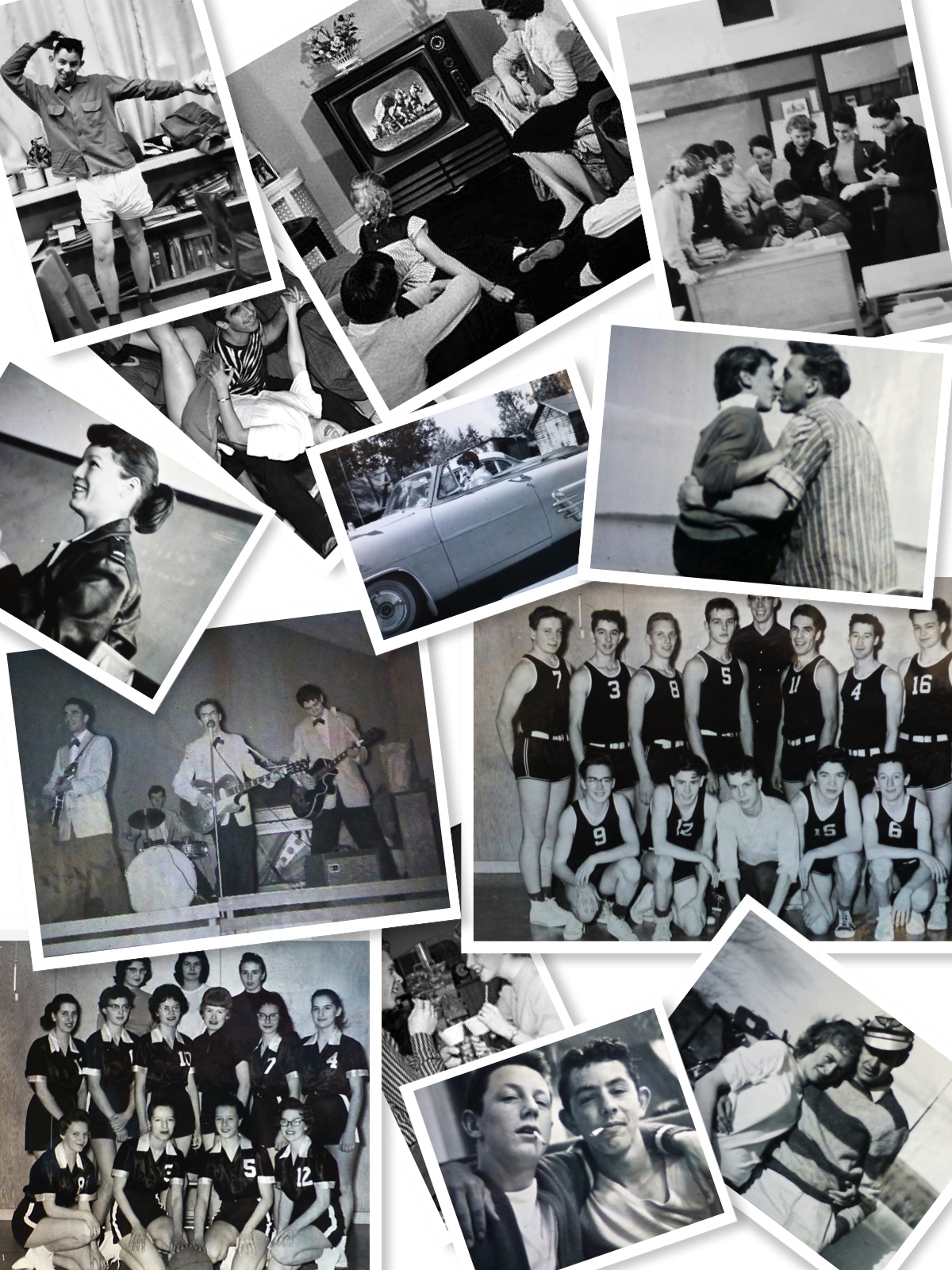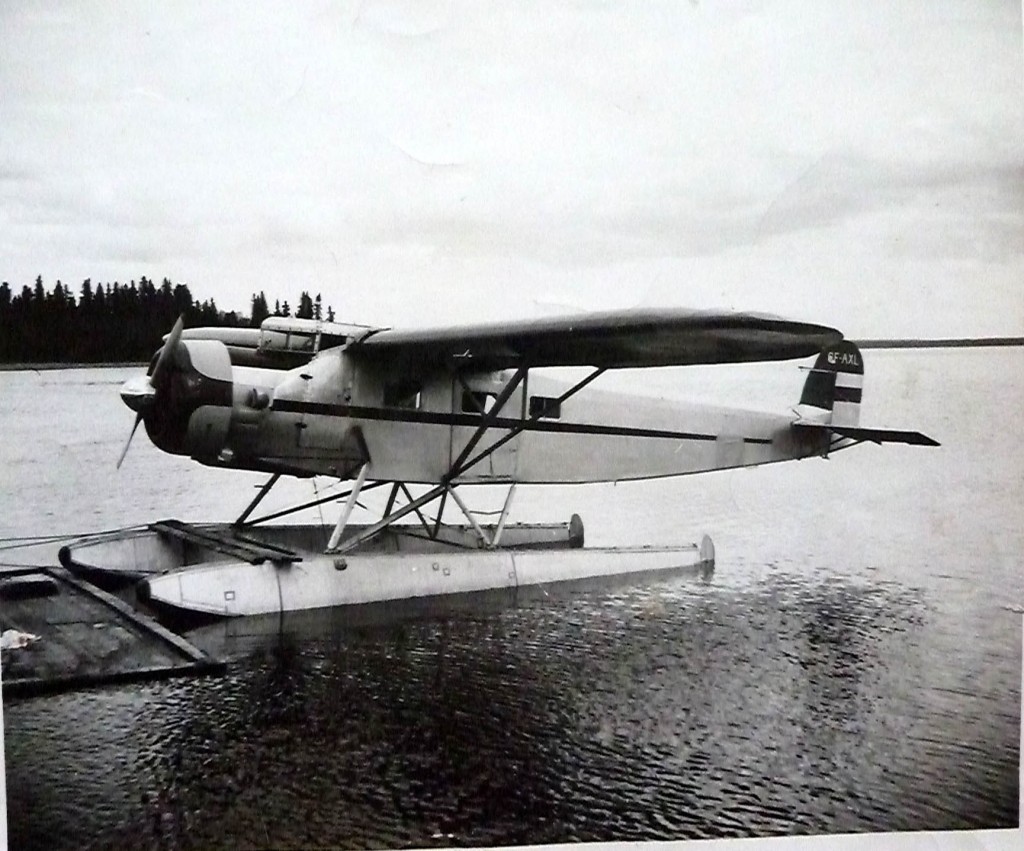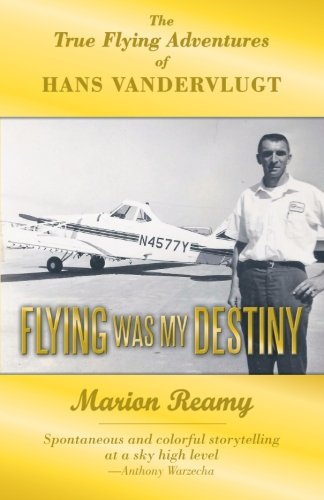Posts Tagged ‘Aaron Pinsky’
Harold David McNeill: About the Author
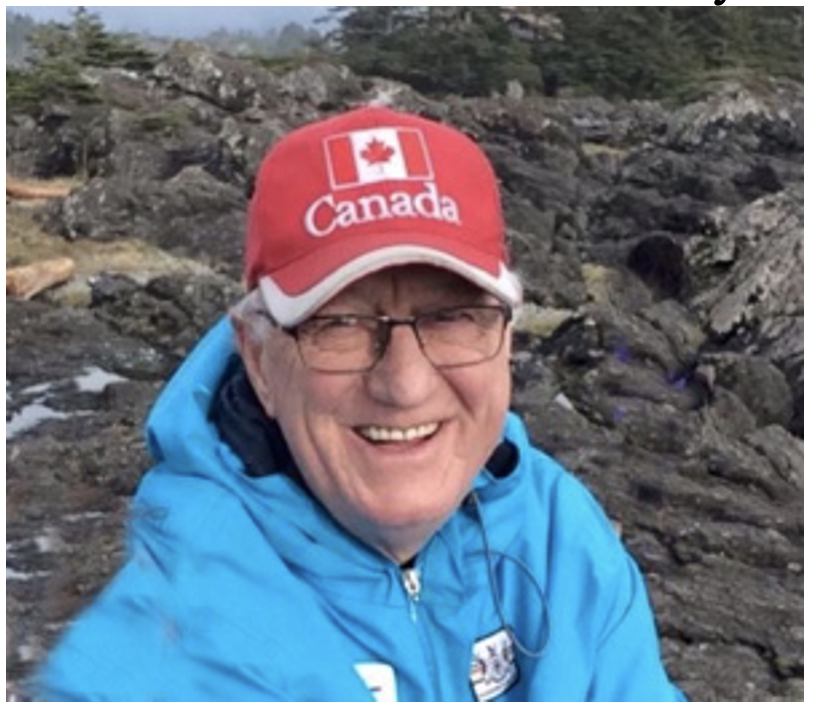
Photo (2014): Winter Storm Watch in Tofino, British Columbia
An avid West Coast and Prairie Explorer, there are few parts of Western Canada that Harold has not touched by land, sea, or air. Many dozens of these adventures with family, friends, work, and volunteerism, are chronicled on this blog and in hundreds of Facebook posts.
Many of the stories are now being rewritten, proofed, and published in book form (see Appendix A)
Harold was born in 1941 and started life on his parent’s homestead in Northwest Saskatchewan where he was surrounded by a wider family circle who immigrated to Canada from the United States in the early 1900s. In his early teens, the family settled in Cold Lake, Alberta, where Harold became interested in flying bush planes as they were still in regular use throughout the area and next door was the largest airforce training base in Canada, RCAF Station Cold Lake. During his High School years, along with his best friend, Aaron Pinsky, the boys worked part-time filleting fish at a packing plant owned by Aaron’s dad. As Aaron’s dad also leased a number of aircraft to haul fish from northern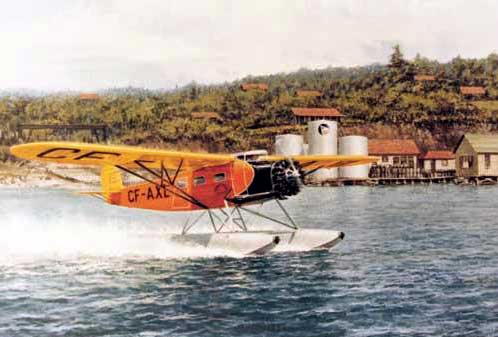 lakes, the boys picked up a lot of ad hoc flying time while assisting the regular pilots in loading and unloading airplanes as well as prepping the float or ski equipped aircraft for flight.
lakes, the boys picked up a lot of ad hoc flying time while assisting the regular pilots in loading and unloading airplanes as well as prepping the float or ski equipped aircraft for flight.
After Harold landed his first major job as a Crash Rescue Fireman with the United States Air Force Strategic Air Command based at Cold Lake, he also began flying training at the RCAF Station Flying Club were he was surrounded by the latest fighter jets and bombers that arrived from around the world for all-weather training. It was a crazy time when the world teetered at the edge of a nuclear apocalypse during the Cold War. After gaining his private pilots licence and float endorsement, he began flying as pilot in command on many of the aircraft on which he worked during his high school years. He later earned his Commercial Pilots Licence and one of the bush planes he flew, CF-AXL, holds special memories as it is now housed in the National Air and Space Museum in Ottawa.
Photo: This photo of an Oil Painting of CF-AXL graced the cover of the Canadian Aviation Historical Society’s 2000 Edition. Built in the 1930s, the aircraft was taken out of production in the early 1940s so the Fairchild Aircraft Company could concentrate on building bombers for World War II.
Click “Continue Reading” for more.
(156)
Cold Lake High: Cars, Girls, Rock and Roll
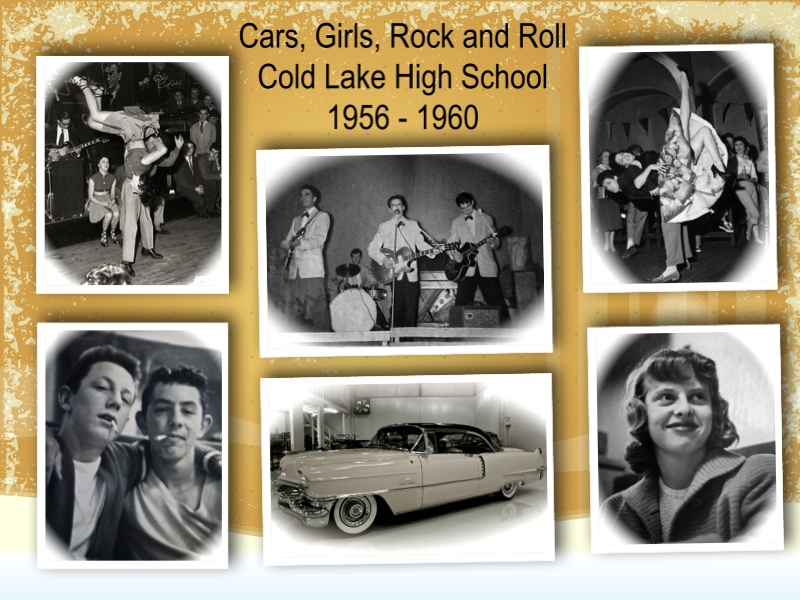 Photo Collage: There was never enough time to do it all. Cars, girls, rock and roll were all part of the freedoms that came in the 1950’s. If was a unique time in the Canada, and we made the best of it. The majority even managed to graduate with distinction. I was one of the non-distincts, however, my sister, Louise McNeill, graduated with a distinct distinction, that being the 1961 Honour Role. This post makes it clear why I failed to do so.
Photo Collage: There was never enough time to do it all. Cars, girls, rock and roll were all part of the freedoms that came in the 1950’s. If was a unique time in the Canada, and we made the best of it. The majority even managed to graduate with distinction. I was one of the non-distincts, however, my sister, Louise McNeill, graduated with a distinct distinction, that being the 1961 Honour Role. This post makes it clear why I failed to do so.
(Photo selection: Jimmy Martineau, Gordie Wusyk, Billy Martineau and drummer in the background, Gary McGlaughlin, playing at the Tropicana Night Club. Below, the Pinsky Cadillac. Harold McNeill and Aaron Pinsky in a “cool” shot at the Roundel Hotel. Sitting across from us is Dorothy Hartman, an awesome dance partner. We worked out the fine points of the back over flip as shown in the photo top right (Dance photos from the web).
1. Introduction
Perhaps the best way to pick my way through the final two segments of the Cold Lake High School Years is by selecting random memories. Not to worry, I will be discrete while keeping the history and stories interesting as possible. The post is not meant as a titillating account of a small town as in Peyton Place, but seeks instead to provide an account of how I950’s High School kids in a small town at the edge of the wilderness on the Alberta/Saskatchewan border lived and loved. 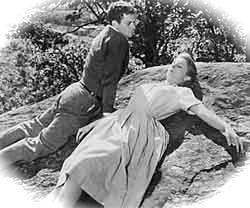 For the most part, private matters between consenting students during our time in Cold Lake High would stay in Cold Lake High. That does not mean I won’t pick around the edges.
For the most part, private matters between consenting students during our time in Cold Lake High would stay in Cold Lake High. That does not mean I won’t pick around the edges.
Peyton Place: The sizzling movie version of the best-selling book was released in 1957, just in time for our coming of age. While the movie was toned down, it still raised eyebrows and was soundly condemned in many quarters. By today’s standards, it would be relatively tame.
The full story, including this Chapter, is now in book form;
This Book is available from
Kindle Direct Publishing
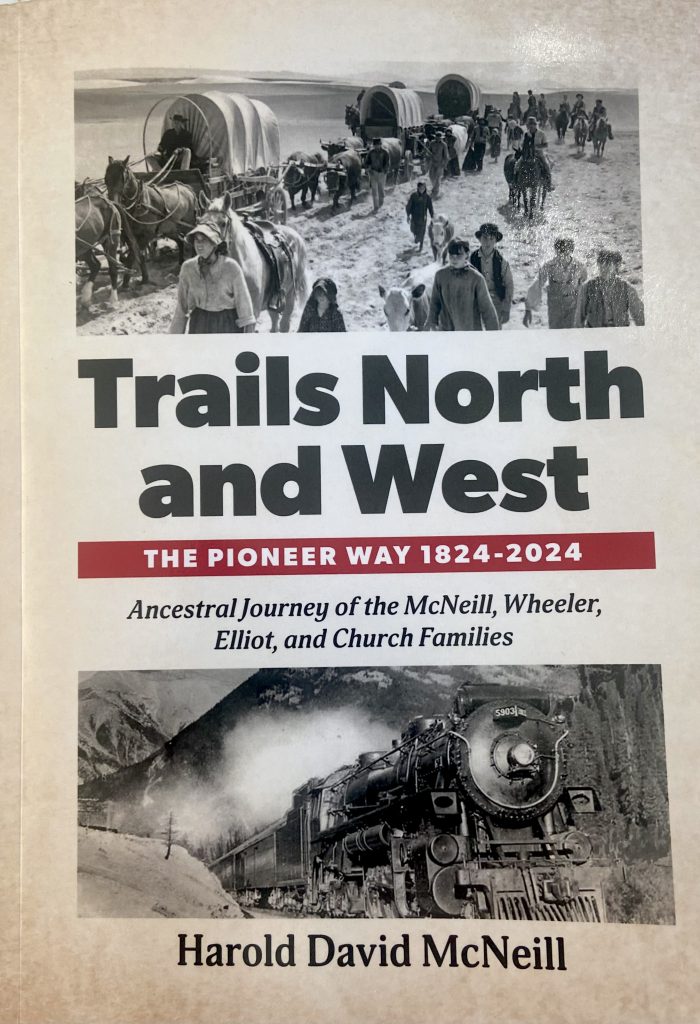
Book 2 -Trails North an and West: The Pioneer Way 1824-2024 is now available from Kindle Direct Publishing (KDP) You can search by book title or author name. A preview of the first seventeen pages is provided (link on bottom left on the KDP order page). The preview also includes the Table of Contents.
Note: When ordering four or fewer books, they will be printed and shipped within Canada. An order of 5 or more books may be printed and shipped from the United States. Postage is included in the purchase price when ordering from either country.
If you are thinking of sending books as gifts to others, you may consider having those books mailed directly to the recipient(s), by Amazon, at time of ordering. In this way, you would avoid Canada Post fees which currently run about $20.00 (plus tax) for one or two books, if enclosed in a single mailer.
For more background information on the story, go to the lead story on this blog.
Cheers,
Harold
Link Here for Chapter 1 of the High School Years
Link Here for Chapter 2 of the High School Years
(3143)
Cold Lake High School Years 1955-1960
Collage: The above photos provide a small representation of the five years a group of young people spent completing Junior and Senior High in Cold Lake, Alberta. The following story places a context around their world, a world that was becoming vastly different from the one in which their parents and grandparents had spent their teen years.
The Silent Generation, a name coined to define those born between 1925 – 1945. While it was applied to those of us who filed into Grade 8 at Cold Lake Junior (photos in the footer) in September 1954, we were so close to the cusp it seems to have missed the mark. Our small group preceded the Baby Boomers by a few years and in the months following graduation, we helped to add a tidy number of Little Boomers to Canada’s rapidly growing population.
The Silent Generation! Really? It seems the Time Magazine reporters who defined our group obviously never traveled to Cold Lake High in the late 50’s, nor did they do any first-hand research at those week-end ‘retreats’ at French Bay, English Bay or Marie Lake. For that matter, all they had to do was drop by one of the week-end parties at the Ruggles, Hill’s, Sanregret’s, Poirier’s or any of a dozen other homes when the parents were away. People called us many things, but ‘silent’ ‘grave’ and ‘fatalistic’ were not the adjectives that flowed past their lips.
The full story, including this Chapter, is now in book form;
This Book is available from
Kindle Direct Publishing

Book 2 -Trails North an and West: The Pioneer Way 1824-2024 is now available from Kindle Direct Publishing (KDP) You can search by book title or author name. A preview of the first seventeen pages is provided (link on bottom left on the KDP order page). The preview also includes the Table of Contents.
Note: When ordering four or fewer books, they will be printed and shipped within Canada. An order of 5 or more books may be printed and shipped from the United States. Postage is included in the purchase price when ordering from either country.
If you are thinking of sending books as gifts to others, you may consider having those books mailed directly to the recipient(s), by Amazon, at time of ordering. In this way, you would avoid Canada Post fees which currently run about $20.00 (plus tax) for one or two books, if enclosed in a single mailer.
For more background information on the story, go to the lead story on this blog.
Cheers,
Harold
Link Here for Chapter 1 of the High School Years
Link Here for Chapter 2 of the High School Years
(5350)
Fairchild 82: A Northern Work Horse
Above Photo (Family Archives): CF-AXL moored at a makeshift dock on Touchwood Lake, northeast of LacLaBiche (c1961). The photo was taken on a trip made by Hans Vanderflugt (my instructor) and I while flying out of Cold Lake, AB in the late 50’s and early 60’s.
Photo Below: Hans and Ruth Vanderflugt
(that photo has somehow delinked from the story)
February 20, 2012. After posting this story on February 2, 2012, a young man, Daniel Mahoney, of Vanair Aviation, in Refugio, Texas, happened to pick it up the link off the Web while searching for background on his stepfather Hans. Dan phoned to tell me, Hans Vanderflugt, co-owner of Vanair, had just been killed in a crash near Colorado a few days before I posted the story (more information in the footer).
This story is dedicated to the memory of Hans, who is survived by his wife, Ruth Hodge Vandervlugt of Refugio, Texas; one son, John Vandervlugt of Round Rock, Texas; one stepson, Billy Michelson of San Antonio, Texas; and a sister, Erna Fentener Van Vlissingen of Amsterdam, Holland.
The following book was recently published about the heroic flying adventures of Hans as he tavelled the world delivering sngle and twin engine aeroplanes.
Photo of Hans Vandervlugt (October 2011) on the book cover.
(Note: I misspelt the surname in the original post as that is what I had always listed in my log book.)
1. Bush Flying in Northern Canada
At 6:00 am, I was out of bed and heading to the dock on Beaver Lake, about four miles east of LacLaBiche, Alberta, where Axle, the nickname for the Fairchild 82A, CF-AXL, was moored. The aircraft was one of the final two members of the Fairchild Series1 of bush planes built in the 1930s by Fairchild Aircraft Ltd. Canada, and still in service. Although not slick or fast, it was a workhorse in which we could haul up to 2000 lbs depending on how much fuel we had to carry.
On shorter trips (thirty to forty-five minutes) we only carried sufficient fuel for one or two round trips as each pound of fuel meant a pound less cargo. This particular aircraft had travelled to almost every corner of Northern Central and Western Canada, whereever pioneers were working to access the vast array of natural resources hidden among the millions of acres of wilderness rocks, trees, shrubs and thousands of freshwater lakes, rivers and streams that defined the north.
Production of the 82A was discontinued when the factory switched to cargo supply and bomber aircraft needed to help fight the Second World War. The Bristol Bolingbroke and the C-19 Packard were the most recognized aircraft being poured out of the Fairchild Factory in the 1940s. Unfortunately, the production of the 82A series was never resumed as the plans and molds were inadvertently destroyed during the company’s transition to wartime aircraft.
CF-AXL, the aircraft we flew back in the 1950’s and 60’s, currently resides in the Canadian Aviation and Space Museum in Ottawa. It was refurbished and moved to the museum in the 1960’s shortly after we flew it when working for a company owned by the father of a High School friend, Aaron Pinsky (lead photo in the link – top left (Aaron), bottom centre (Harold and Aaron, two cool dudes). We completed our flying training at RCAF Station Cold Lake and regularly flew together during the early years.
2. Early Mornings
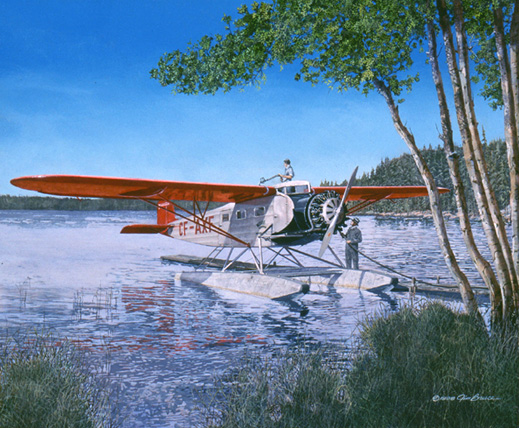 On this morning I was suffering a bit of a headache after hanging out a little too late with friends, the Gatzke’s, with whom I lived while attending grade five in LacLaBiche some ten years earlier (Link). On other flights, I had also made friends with several others who put me up while on layovers in LacLaBiche.
On this morning I was suffering a bit of a headache after hanging out a little too late with friends, the Gatzke’s, with whom I lived while attending grade five in LacLaBiche some ten years earlier (Link). On other flights, I had also made friends with several others who put me up while on layovers in LacLaBiche.
Photo (Painting of AXE by Jim Bruce, Aviation Artists, Web Source): This, the only other 82A in service in Canada, is shown being refuelled while moored to a small dock somewhere in Northern Canada. AXE disappeared in 1964 while on a flight in the Northern Arctic. Link to the story. Note the slide back access to the upper wing from the cockpit. That little door made accessing the fuel tanks much easier (there is also another photo attached to end of story). I can still remember the distinct smell of aviation fuel as we added fuel two or three times a day. We never carried more fuel than necessary as the weight of every extra gallon of fuel had to be subtracted from cargo.
By 6:30 Hans Vanderflugt, the Chief Pilot for Alberta Fish Products and I, had pumped the floats and topped up the gas, both accomplished with an ‘arm killer’ toggle pumps. Well, stating it was ‘Hans and I’ was generous as he usually let me do the toggle work while he held the hose. I never complained though as I was more than happy to be getting ‘free’ flying lessons as I built hours towards my Commercial Licence. If I had to do a little pumping, then fly twenty minutes, load 2000 pounds of fish, fly another twenty and unload it, it was a small price to pay for this kind of flying time.
Once I had completed the external and internal checks, then started the engine, Hans would cast off, jump into the co-pilots seat. We would taxi into the bay for our first flight of the day. Today, however, was to be different.
(6119)
Big Kinosoo: The Rush is On – Legend Becomes Reality – Chapter 3 of 6
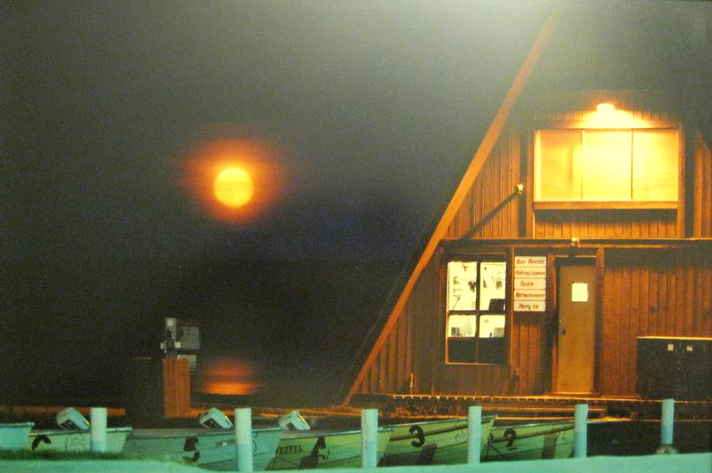
Photo: Copy of framed photo in the dining room at the home of my sister Louise and her husband Frank Yochim. This is Franks Cold Lake Marina as it looked in the late 1960s after being moved to the Main Dock. For thirty years my brother-in-law, along with members of the family operated the Marina and following his retirement, his son Lorin Yochim took over for several years before heading out to explore the world.
Link to Next Post: DHC-3 Fish Attack.
Link to Last Post: Monster Fish
Link Back to Adventures Index
Big Kinosoo: First Half of the 1900s
Photos: Mr. Labatt, left, and Mr. Z.A. Lefebvre, with three monster trout caught in Cold Lake between 1915 and 1918. It is not hard to imagine there were, and still are, fish larger than these in Cold Lake. Pictures were copied from “Treasured Scales of the Kinosoo”, a compilation of the history of Cold Lake by Laura Dean Skarsen.
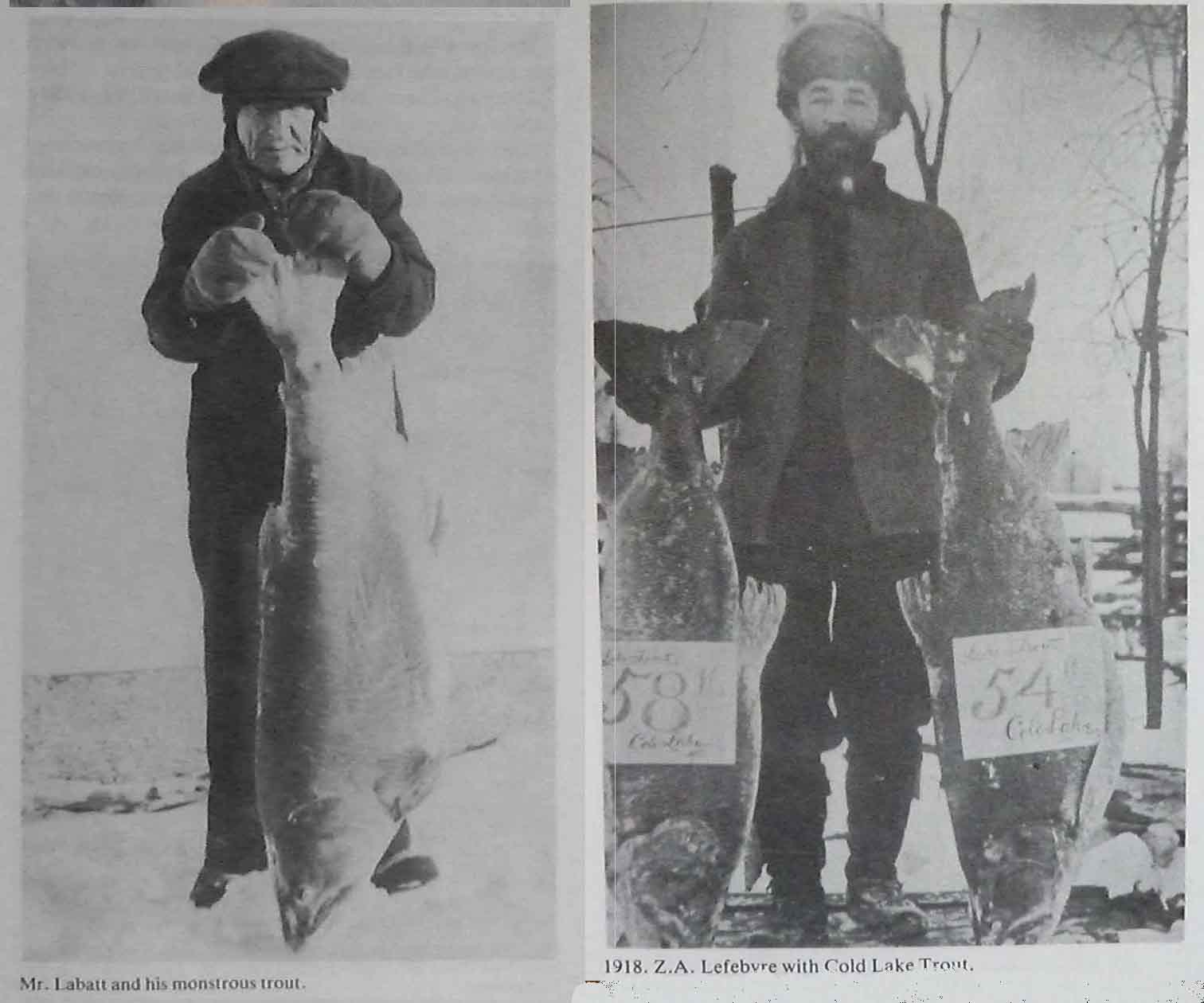
The Rush is On
Many who arrived in Cold Lake early in the 20th Century to take up the search for the Big Kinosoo, decided to stay. Many became trappers, loggers, farmers, cattlemen, while others opened businesses in order to raise money to continue their search for the big fish. In their search they caught many other big fish, but never the Big Kinosoo. He was, by all accounts, one very elusive fish. By the middle of the century, many new residents were taking jobs building the new Canadian Forces Air Base west of town. Still later, hundreds of these workers accepted more permanent positions when the base became operational.
(1484)

